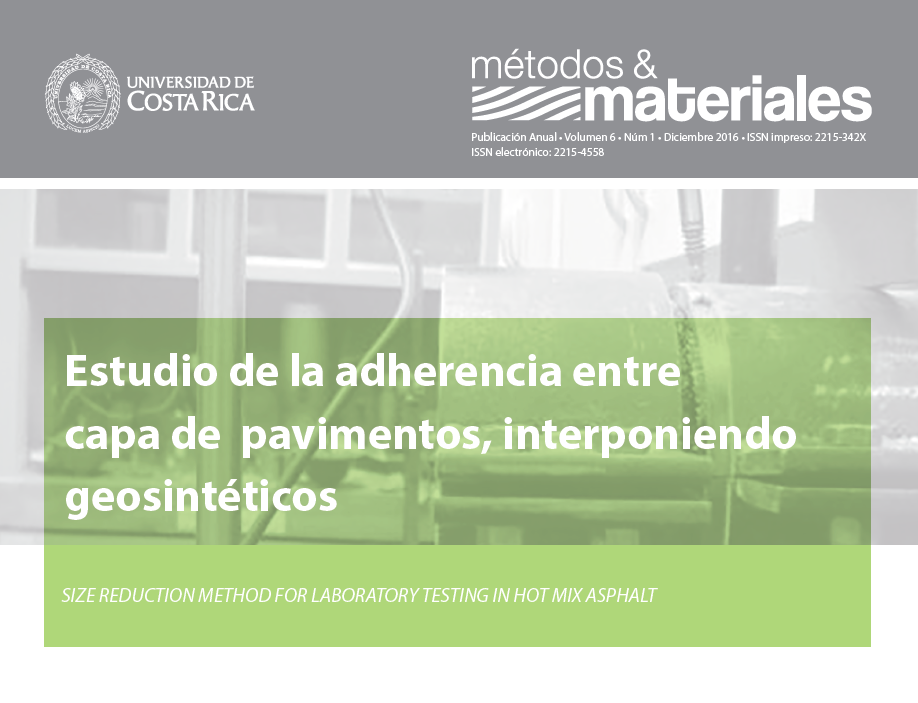Abstract
In a multilayer system, as a pavement with layers of different materials, movements between layers are an important source of cracks. When the adhesion between layers is poor, often cracking appear early with increasing deformation at the loads of traffic due to consumption of internal energy of the material, causing problems fatigue cracks from top to bottom (top- down).
In this context the study of adherence between different substrates (base concrete and asphalt base), interposing different geosynthetic materials, using as a bonding agent a modified asphalt emulsion, and placing thereon a layer of conventional asphalt CAC D20, acting as reinforcement in rehabilitating deteriorated of pavements was proposed. It is considered as a reference intercoat adhesion without placing any geosynthetic material.
To quantify the adhesion it was used strength test cut LCB (Laboratorio de Caminos de Barcelona), and the adhesion test traction implemented in the LEMaC, Highway Research Center of the National Technological University of La Plata is used. The load and deformation at the interfase of materials, were tested and a result it was observed that adhesion is favorably or unfavorably affected, depending on the type of geosynthetic material and the substrate where it is applied.
References
Al-Qadi, I.; Lahouar, S.; Loulizi, A.; Elseifi, M. and Wilkes, J. (2004). Effective Approach to Improve Pavement Drainage Layers. Journal of Transportation Engineering, 130 (5), 658-664.
Delbono H. L., et al, (2014). Estudio de grillas poliméricas como sistemas anti reflejo de fisuras bajo solicitaciones dinámicas. (Tesis Doctoral), Universidad Tecnológica Nacional, Facultad Regional La Plata (inédita), 379 p. ISBN: 978-987-1896-38-7. Disponible en: http://lemac.frlp.utn.edu.ar/wp-content/uploads/2014/12/ parte-A.pdf
Dragomir L. Mihai; Petit Christoper (2011). Thermal Shrinkage bending test in characterizing reinforcement advantajes over bituminous mixtures. Acta technica Napocensis: civil engineering & architecture. Vol. 54 N°1. p. 112-121.
Montestruque G., et al, (2015). Avaliação da adherencia de geogrelhas entre camadas asfálticas. Memorias XVIII Congreso Ibero Latinoamericano del Asfalto, ISBN 978-950-630-031-9. pp. 919-929. Bariloche, Argentina.
Norma NLT-382/08 (2008). Evaluación de la adherencia entre capas de firme, mediante ensayo de corte. Depósito Legal: M-57113-2008. ISBN: 978-84-7790-484. España.
Rabb C.; Partl M. N. (2004). Interlayer shear performance: experience with different pavement estructure. 3rd Eurasphalt & Eurobitume Congress Viena, Book 1, pp. 535-545.
Ricci L. A. (2011). Evaluación de la adherencia entre capas asfálticas con intercapa de Geosintético. (Tesis de Maestría), Universidad de Buenos Aires. Disponible en: http://lemac.frlp.utn.edu.ar/wp-content/uploads/2012/08/Tesis-Posgrado-LuisRicci.pdf

